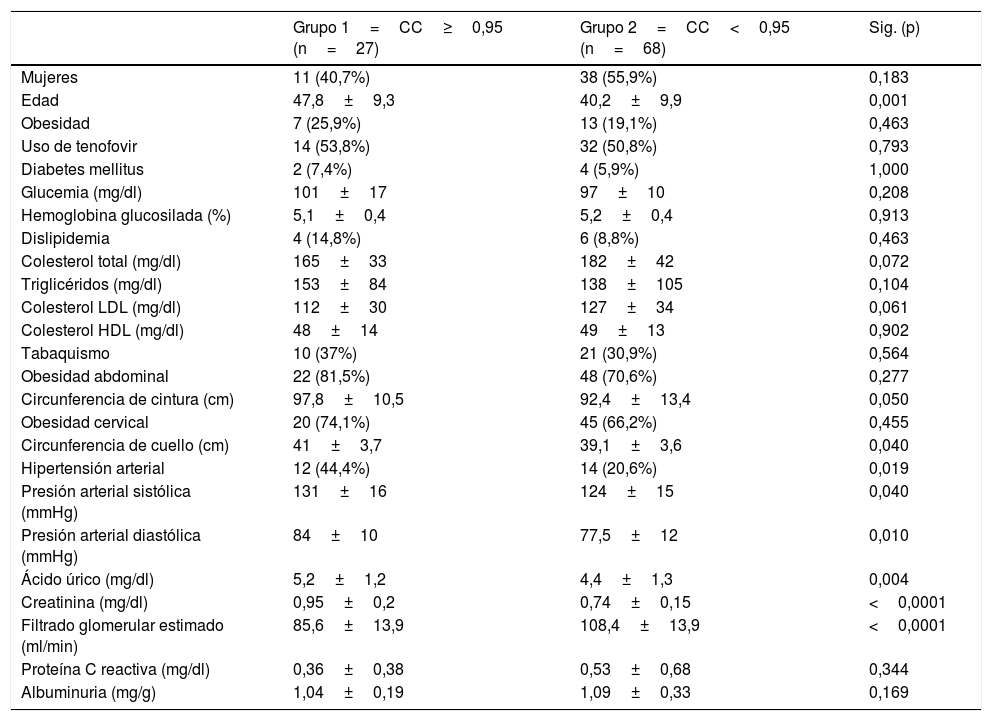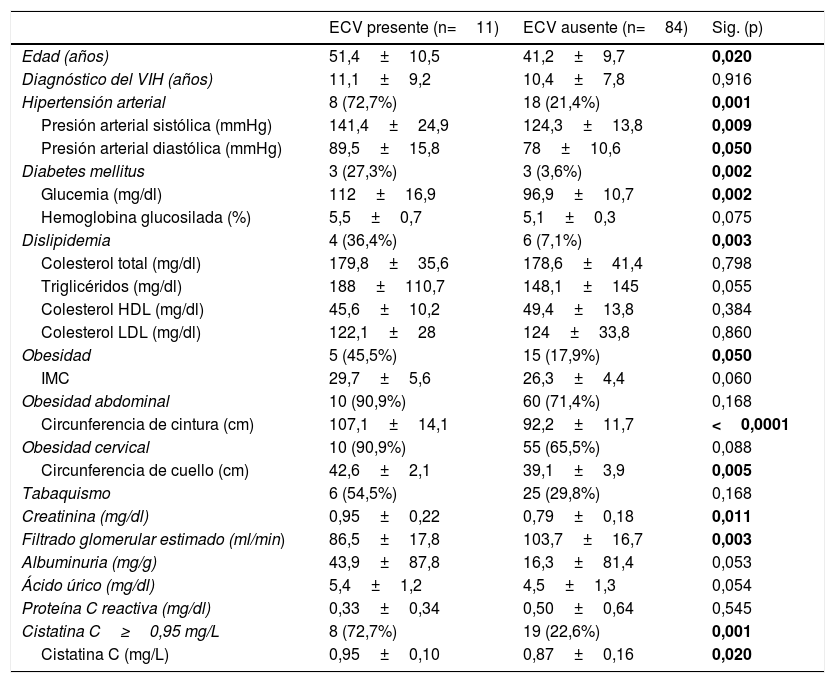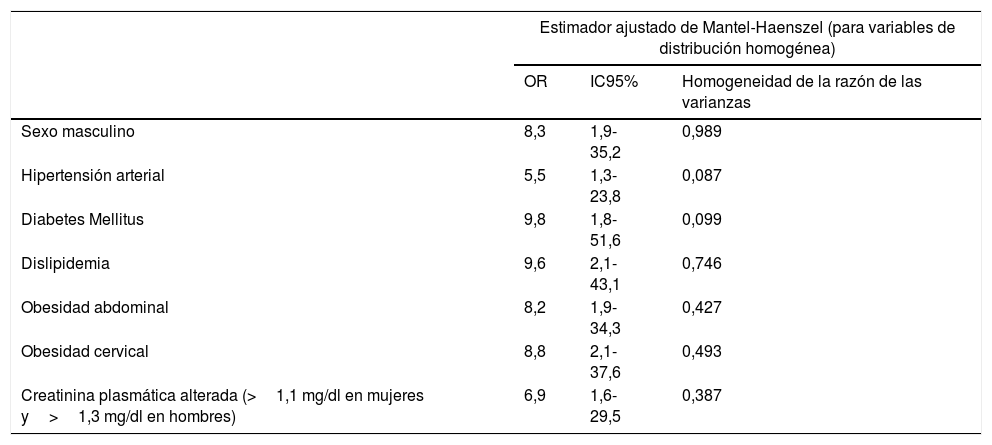Los pacientes infectados por el virus de la inmunodeficiencia humana (VIH) tienen mayor riesgo cardiovascular (RCV). El desarrollo de enfermedad cardiovascular (ECV) en esta población involucra factores de RCV tradicionales y factores relacionados con la propia infección, como el estado proinflamatorio crónico, la disfunción inmune y el tratamiento antirretroviral recibido. La cistatina C (CC) ha demostrado utilidad para valorar la presencia de factores de RCV y ECV establecida en población general, ancianos y enfermos renales. Analizamos dicha asociación en una población VIH+.
Material y métodosEstudio analítico, observacional, transversal. Se recogieron factores de RCV y presencia de ECV en pacientes VIH+, obteniendo determinación de CC. Se establecieron 2 grupos: grupo1=CC elevada (≥0,95mg/L) y grupo 2=CC normal (<0,95mg/L).
ResultadosSe incluyeron 95 pacientes, grupo1=27 (28,4%) y grupo2=68 (71,5%). Un valor de CC≥0,95mg/L se relacionó con la presencia de ECV (p=0,01); con aumento de medias de circunferencia de cintura (p=0,05), circunferencia de cuello (p=0,04), presión arterial sistólica (p=0,04), presión arterial diastólica (p=0,01), puntaje al score de riesgo de Framingham (p=0,03) y puntaje al score de riesgo de Framingham adaptado para VIH (p=0,01). Después de realizarse análisis multivariado con incorporación de variables con asociación bivariada a ECV, solo CC≥0,95mg/L continuó relacionándose con ECV.
ConclusiónCC≥0,95mg/L se relacionó de forma independiente con la presencia de ECV. Este punto de corte también se vinculó a mayores niveles de presión arterial y mayor RCV a 10 años calculado por score de Framingham y score adaptado para población VIH.
Patients infected with the human immunodeficiency virus (HIV) have a higher cardiovascular risk (CVR). The development of cardiovascular disease (CVD) in this population involves traditional CVR factors and factors related to the infection itself, such as chronic inflammatory status, immune dysfunction, as well as the antiretroviral therapy received. Cystatin C (CC) has shown to be useful in assessing the presence of CVR factors and CVD established in the general population, the elderly population, and patients with chronic kidney disease. An analysis was performed on this association in an HIV positive population (HIV+).
Material and methodsAnalytical, observational, cross-sectional study was conducted, and included collecting information about CVR factors and CVD in HIV+, as well as measuring CC. The patients were divided into 2 groups: Group1=high CC (≥0.95mg/L) and Group2=normal CC (<0.95mg/L).
ResultsA total of 95 patients were included. Group1=27 (28.4%) and Group2=68 (71.5%). A value of CC≥0.95mg/L was related to the presence of CVD (P=.01). It was also related with and an increase in waist circumference (P=.05), neck circumference (P=.04), systolic blood pressure (P=.04), diastolic blood pressure (P=.01), Framingham score (P=.03), and Framingham score adapted for HIV (P=.01). After performing multivariate analysis with incorporation of variables associated with CVD in the bivariate analysis, only CC≥0.95mg/L continued to be related to CVD.
ConclusionCC≥0.95mg/L was independently associated with CVD. This cut-off point was also linked to higher levels of blood pressure, and higher CVR at 10 years using the Framingham Score and Framingham Score adapted for HIV population.











